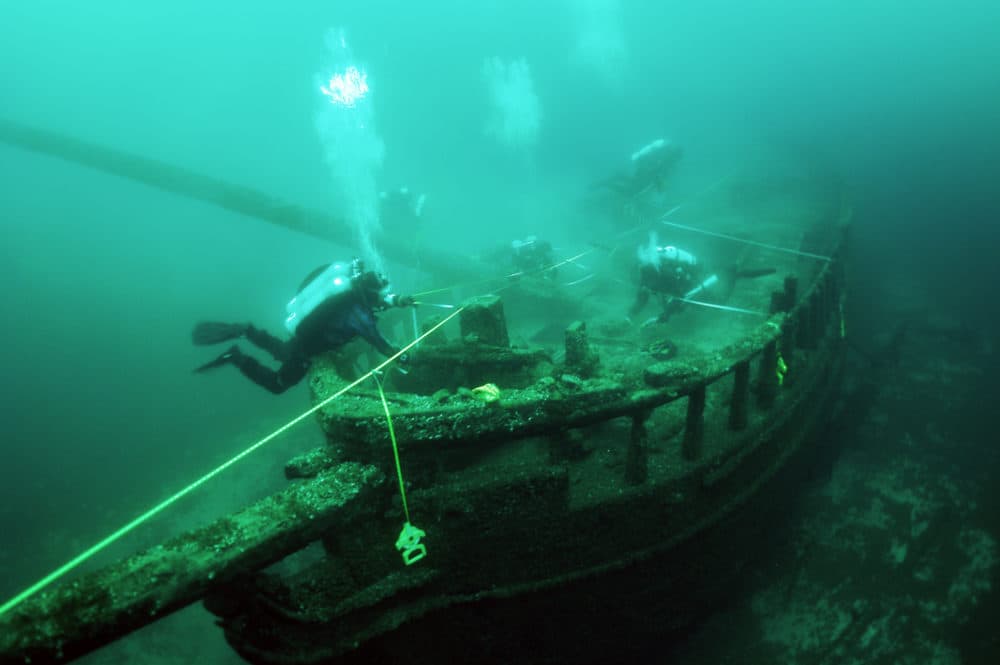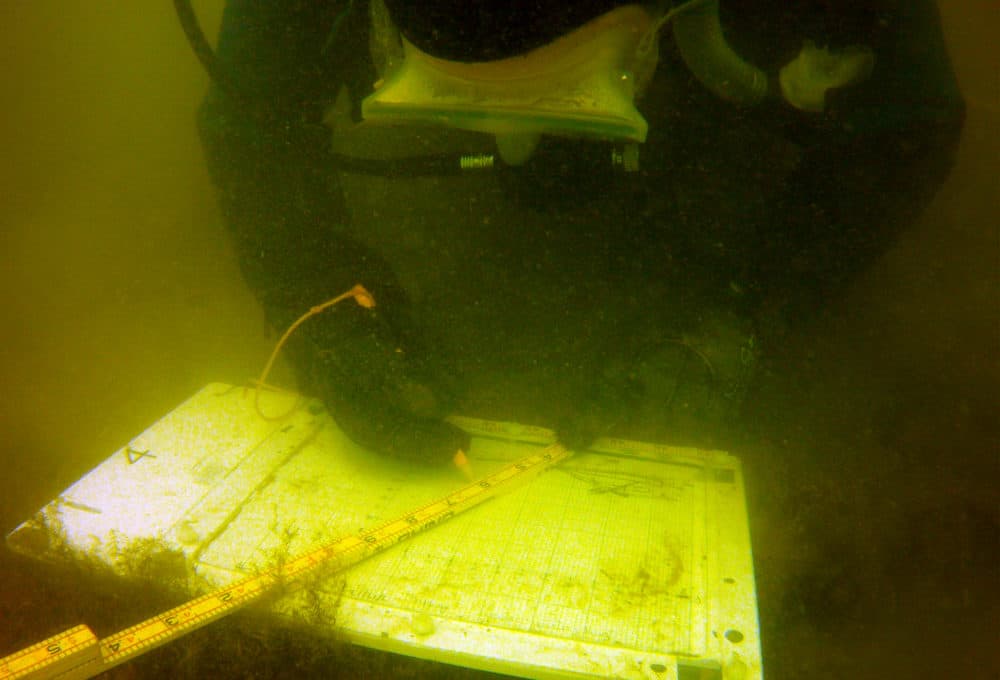Advertisement
An Underwater Archaeologist's Guide To Wisconsin's 'Shipwreck Coast'

Lake Michigan will soon have its first national marine sanctuary, and it's teeming with shipwrecks.
Last month, the National Oceanic and Atmospheric Administration designated a swath of water between Milwaukee and Green Bay as the Wisconsin Shipwreck Coast National Marine Sanctuary – aptly named because it contains the remains of 36 known shipwrecks, and perhaps dozens more that have yet to be explored.
Kevin Cullen, president of the Wisconsin Underwater Archeological Association, says many areas such as Chicago, Milwaukee and Sheboygan are already listed under the National Register of Historic Places for their shipwreck discoveries. However, NOAA’s new sanctuary takes it a step further.
“It adds another layer of protection and accessibility and notoriety to these world-class shipwrecks,” Cullen says.
Cullen has been diving in Lake Michigan for years. He says nothing compares to the feeling of swimming in its chilly waters, dropping to about 40 degrees when you pass the lake’s second thermocline. Astonishing views of shipwrecks leave a memory of what once was.
“You behold this hulk of a monstrosity,” Cullen says. “In some ways, some of them are graveyards. They carry and have carried humans on them that perished in pretty harrowing circumstances.”
One of the stories the shipwrecks tell dates back to the 19th century when the Great Lake schooner Rouse Simmons failed to make its holiday delivery. The vessel, more commonly known as the “Christmas Tree Ship,” was built in 1868 and went down in 1912 on its way to Chicago carrying Christmas trees during a stormy night. The ship sank and took all 16 lives on board with it.
Known as one of the oldest ships, the vessel still sits at the bottom of the lake. It can be found around the northern side of the new marine sanctuary.
Advertisement
“Not only do [these ships] have truly sad stories,” Cullen says, “but they provide information for us to then recreate and relive what it was like to be on a 19th-century schooner here in the 21st century.

However, the preservation of these shipwrecks depends on the circumstances in which the ships sank.
“If it was a storm and it kind of capsized, then it's essentially a ‘shipwreck in a bottle’ preservation,” Cullen says. “Where the masts are still upright.”
Due to the lake’s cold freshwater, it’s even possible for some well-preserved shipwrecks to float away like brand new. In saltwater, he says, marine boring worms cause wooden vessels to decay. But in Lake Michigan, ships that sank more than 200 years ago can be found at the bottom of its waters.
Many of these antique vessels still haven’t been explored. Using modern sonar technology can help discover new shipwrecks, Cullen says.
The Pere Marquette 18 is a long-sought shipwreck that was located by Cullen’s colleagues last year. Before using sonar technology to find the more than 400-foot-deep sunken steamship, his colleagues scoured over years of newspaper accounts and lined up maps and nautical charts.
“We call it mowing the lawn,” Cullen says. “It's using sonar and boat patterns and you basically go back and forth until the target is reached.”
To confirm the location of the missing vessel, the shipwreck hunters dropped a camera called a remotely operated vehicle (ROV) into the seemingly bottomless lake.
“I think [the] exciting thing that NOAA will be able to bring in [is] new technologies that can access these wrecks in much more efficient ways”, Cullen says. “Maybe even [submarines] in the future, bringing humans down to these depths that we can't actually access with regular scuba gear.”
Chris Bentley produced and edited this interview for broadcast with Todd Mundt. Xcaret Nunez adapted it for the web.
This segment aired on July 13, 2021.